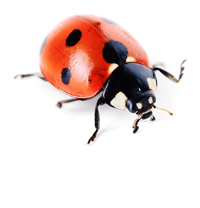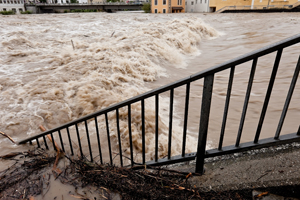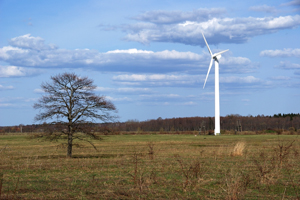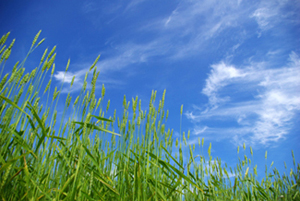 Fun fact re: good garden bugs: CFAES’s Mary Gardiner has a book in the works on the topic, and with that very title. This week’s workshops on said bugs will tap into excerpts, photographs and illustrations from it. Want your own copy? It’s available now for preorder. (Photo: Quarry Books.)
Fun fact re: good garden bugs: CFAES’s Mary Gardiner has a book in the works on the topic, and with that very title. This week’s workshops on said bugs will tap into excerpts, photographs and illustrations from it. Want your own copy? It’s available now for preorder. (Photo: Quarry Books.)
Month: May 2014
Good garden bugs, and how you can mutually benefit each other
The creatures  are tiny. But the name of a workshop about them is … not quite as small as they are. “The Secret Lives of Good Garden Bugs and 2014 Buckeye Lady Beetle Blitz Volunteer Round-up,” led by CFAES’s Mary Gardiner and members of her lab, takes place today in Wooster (has already started; apologies), tomorrow near Cleveland and Friday in Cincinnati. The program is the same in all three locations. The focus is on arthropods that benefit gardens. You’ll also learn about, and can sign up to help with, two citizen-science research projects — one on native lady beetles, one on bee-healthy landscapes. (Photo: PhotoSpin.)
are tiny. But the name of a workshop about them is … not quite as small as they are. “The Secret Lives of Good Garden Bugs and 2014 Buckeye Lady Beetle Blitz Volunteer Round-up,” led by CFAES’s Mary Gardiner and members of her lab, takes place today in Wooster (has already started; apologies), tomorrow near Cleveland and Friday in Cincinnati. The program is the same in all three locations. The focus is on arthropods that benefit gardens. You’ll also learn about, and can sign up to help with, two citizen-science research projects — one on native lady beetles, one on bee-healthy landscapes. (Photo: PhotoSpin.)
National Climate Assessment poem, Midwest edition, #6: Great Lakes at Greater Risk
 Key Message 6 for the Midwest, “Increased Risks to the Great Lakes,” from the third National Climate Assessment, released May 6, 2014 (first post):
Key Message 6 for the Midwest, “Increased Risks to the Great Lakes,” from the third National Climate Assessment, released May 6, 2014 (first post):
Climate change will exacerbate
A range of risks to the Great Lakes,
including changes in the range and distribution of certain fish species,
increased invasive species and harmful blooms of algae,
and declining beach health.
Ice cover declines
will lengthen the commercial navigation season.
National Climate Assessment poem, Midwest edition, #5: Extreme Rainfall Events
 Key Message 5 for the Midwest, “Increased Rainfall and Flooding,” from the third National Climate Assessment, released May 6, 2014 (first post):
Key Message 5 for the Midwest, “Increased Rainfall and Flooding,” from the third National Climate Assessment, released May 6, 2014 (first post):
Extreme rainfall events
And flooding
Have increased during the last century,
And these trends are expected to continue,
causing erosion,
declining water quality,
and negative impacts on transportation,
agriculture,
human health,
and infrastructure.
National Climate Assessment poem, Midwest edition, #4: Gassy But Solutions Exist
 Key Message 4 for the Midwest, “Fossil-Fuel Dependent Electricity System,” from the third National Climate Assessment, released May 6, 2014 (first post):
Key Message 4 for the Midwest, “Fossil-Fuel Dependent Electricity System,” from the third National Climate Assessment, released May 6, 2014 (first post):
The Midwest has a highly energy-intensive economy
With per capita emissions of greenhouse gases
More than 20 percent higher than the national average. The region
Also has a large and increasingly utilized
Potential to reduce emissions
That cause climate change.
National Climate Assessment poem, Midwest edition, #3: Increased Public Health Risks
 Key Message 3 for the Midwest, “Public Health Risks,” from the third National Climate Assessment, released May 6, 2014 (first post):
Key Message 3 for the Midwest, “Public Health Risks,” from the third National Climate Assessment, released May 6, 2014 (first post):
Increased heat wave intensity and frequency,
Increased humidity,
Degraded air quality,
And reduced water quality
Will increase public health risks.
National Climate Assessment poem, Midwest edition, #2: Forest Disruptions
 Key Message 2 for the Midwest, “Forest Composition,” from the third National Climate Assessment, released May 6, 2014 (first post):
Key Message 2 for the Midwest, “Forest Composition,” from the third National Climate Assessment, released May 6, 2014 (first post):
The composition of the region’s forests
Is expected to change
As rising temperatures drive habitats for many tree species northward.
The role of the region’s forests as a net absorber of carbon
Is at risk from disruptions to forest ecosystems,
In part due to climate change.
| 1 |
Prepare to be dazzled
 Hundreds of crabapple trees in Secrest Arboretum, part of OARDC’s Wooster campus, are starting to bloom. Research on these trees leads to improved varieties that need, say, fewer or no pesticides, look good in the landscape not just when they blossom but all year round (by having colorful leaves in fall, for instance), offer food for birds, and, like other trees, provide ecosystem services that benefit people. Visiting is free and open to the public. Directions. Campus map. OARDC is CFAES’s research arm. (Photo: Strawberry Parfait crabapple by K.D. Chamberlain.)
Hundreds of crabapple trees in Secrest Arboretum, part of OARDC’s Wooster campus, are starting to bloom. Research on these trees leads to improved varieties that need, say, fewer or no pesticides, look good in the landscape not just when they blossom but all year round (by having colorful leaves in fall, for instance), offer food for birds, and, like other trees, provide ecosystem services that benefit people. Visiting is free and open to the public. Directions. Campus map. OARDC is CFAES’s research arm. (Photo: Strawberry Parfait crabapple by K.D. Chamberlain.)
National Climate Assessment poem, Midwest edition, #1: Decreased Productivity
Key Message 1 for the Midwest, “Impacts to Agriculture,” from the third National Climate Assessment, released May 6, 2014 (first post):
In the next few decades,
Longer growing seasons
And rising carbon dioxide levels
Will increase yields of some crops,
Though those benefits will be progressively offset
By extreme weather events.
Though adaptation options can reduce some of the detrimental effects,
In the long term, the combined stresses associated with climate change
Are expected to decrease agricultural productivity.
New pest puts berries at risk
 A new invasive insect pest, a nondescript kind of vinegar fly, is threatening Ohio’s fruit crops, especially its berries.
A new invasive insect pest, a nondescript kind of vinegar fly, is threatening Ohio’s fruit crops, especially its berries.
